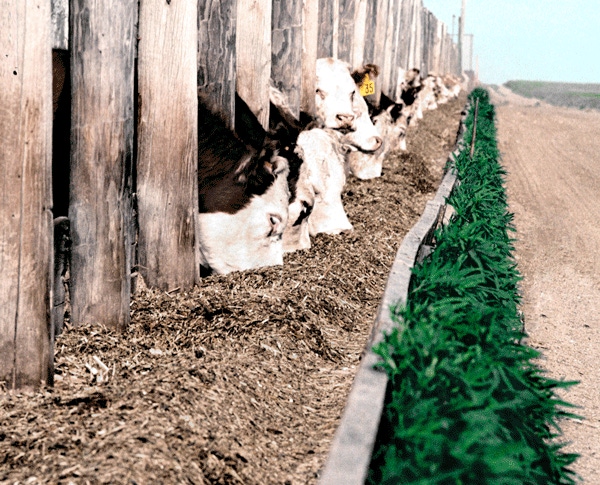
Consumer issues, demand drive beef production
• In the past, the consumer base was the producer and perhaps a few neighbors, but as transportation and worldwide access expanded, the consumer base also has expanded.• There is no business unless the consumer is involved in the formula for the future. How that reality connects to the producer who is thinking of selling cows probably is a loose fit. However, consumer thoughts need to be integrated with production expansion or contraction.
December 31, 2010

Consumers and beef producers always have been entwined. The simple fact is that without consumers, there is no need for production. In the past, the consumer base was the producer and perhaps a few neighbors, but as transportation and worldwide access expanded, the consumer base also has expanded.
So where are all the cows going? The connect remains between the producer and consumer, and so does the vested interest of consumers and the reality of the beef business. There is no business unless the consumer is involved in the formula for the future. How that reality connects to the producer who is thinking of selling cows probably is a loose fit. However, consumer thoughts need to be integrated with production expansion or contraction.
There are several very real impacts for small and mid-sized operations that loom in the future about the consumer and demand. This changing environment is changing beef production and those who will survive the production mode.
The issues driving change in beef demand:
• People with increased income levels in dual-income families and related lifestyle;
• Marked change in obesity and associated health concerns and costs;
• The slowing of population growth resulting in an older North American population;
• A more ethnically diverse population through increased immigration;
• A noticeable change in how markets distribute and sell food
How is this going to play out in terms of beef production? Jensen narrows the points to three issues.
Food safety more important
She says, “Food safety will continue to be a paramount consumer expectation.” The beef producer is no longer left out of food safety concerns. Sorry, but it is true. In fact, food safety will track directly back to the producer, whether the producer wants it or not. The consumer is our market, and the market is now and forever will be very sensitized to all the needs of a thorough “production to plate” system.
The second point she makes is that “as North American incomes continue to increase, consumers will choose products on the basis of varied attributes, including taste, variety and convenience.” Unfortunately, consumers still want relatively low-priced food, which makes this second point very complicated. Meeting and keeping up with consumer expectations, while managing relatively “slow-to-change” production systems, makes this second point challenging from a producer perspective. However, that is the future, and challenge is what the future holds.
The last point Jensen makes is that the “continued concentration of large-scale processing, food distribution and retailing may reduce consumer choice in markets.” This appears to be the business format that continues to bring consumers their desires, which is reasonably priced food and assurances of adequate quality standards.
Producers today need to be alert to consumer preferences.
I am not sure how these thoughts interact with producer thoughts. Perhaps one doesn’t really like to admit it, but most conversation of yesterday was mostly among producers. The buying of bulls and replacement heifers and the subsequent marketing of the offspring was a discussion of producer likes and dislikes, not consumer desires.
The ability of cows and bulls to live and produce in a multitude of production environments led to the necessity of selection for adaptability. Those cows and bulls adapted to the environment and then had to meet the critical eye of the owner or manager. It was the hope that the changes mustered an arsenal of production traits that equated to efficient and profitable beef production.
Where was the consumer in all this discussion? What we do know is consumer issues and demand drive beef production. Those production units that can link, connect or by whatever means coexist with the various business models will survive because of consumer acceptance and their willingness to spend. Planting one’s feet in the ground or burying one’s head in the sand will not work.
Beef only equates to revenue when a consumer spends a dollar. It’s that dollar that ultimately means profit for the beef producer. So at least listen, think and contemplate how producer, business and consumer interactions will work in the future.
You May Also Like



